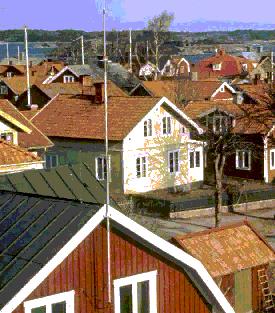 Swedish
belongs to the northern or Scandinavian branch of the Germanic languages,
a subfamily of Indo-European languages. It is an eastern development of
the language known as Dönsk tunga ("Danish tongue"),
spoken not only in Denmark but in all of Scandinavia even before the early
Middle Ages.
Swedish
belongs to the northern or Scandinavian branch of the Germanic languages,
a subfamily of Indo-European languages. It is an eastern development of
the language known as Dönsk tunga ("Danish tongue"),
spoken not only in Denmark but in all of Scandinavia even before the early
Middle Ages.
The Swedish branch of this common tongue developed into a separate language during the period 900-1500 and is called Old Swedish. Until after 1200 the only records of the language are runic inscriptions, cut primarily on tombstones and memorial stones. The Latin alphabet was introduced in the 13th century; periods of further differentiation followed, and some approximation to Danish occurred. The written language, based on two of the most widely spoken dialects, was made uniform throughout all of Sweden in the 14th century. Aside from differences in vocabulary, Swedish now differs from Danish especially in its retention, after a vowel, of the old voiceless consonants k, t, and p, which in Danish changed to g, d, and b, and in its retention of the vowels a and o in unstressed syllables, whereas Danish has e or no vowel.
The main body of the Swedish vocabulary is of old Germanic stock. The
principal foreign ingredients are Latin and Greek
words that came in with Christianity and also with the growth of scholarship.
Low German words dating from the time of the Hanseatic
League (13th-16th century), German words from
the 17th century, and French words borrowed in the 17th and 18th centuries
are all part of modern Swedish. Swedish has a unique accent that involves
both stress and variations in musical pitch, which gives it a singsong
rhythm. A simplified spelling reform was introduced in 1906. Even today,
great dialectical differences exist in spoken Swedish throughout the country,
and some linguists still think some of them are separate languages, e.g.
Skanian.